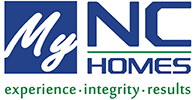
Buyers and sellers all want to know with selling prices going up, inventory down, and demand through the roof, are we headed for a crash or a correction? This week we would like to go over some key differences between the market in 2008, during the crash, and the market today. From financing and lending to supply, to foreclosures, there are many reasons to continue to be optimistic and to grow your wealth sustainably in real estate.
Lending in 2008 vs 2022
In the years leading up to the crash, anyone could get a loan. Low down payments with high-interest rate loans were awarded to those with credit scores under 620 regularly. In the years following 2008, there were many homes whose lenders did not properly vet whether borrowers could pay back loans and homes ended up going into foreclosure or going up for short sale. Today, buyers needed to have higher credit scores and prove that they can pay back loans. Not only have lenders who participated in predatory practices of the past, been penalized, but the banks today who are still lending, are much more rigorous in terms of protecting their assets.
Supply in 2008 vs 2022
When you talk about lenders offering loans to unqualified borrowers, it is not just individuals, but corporations and builders as well. Since borrowing was rampant and the barriers for borrowing were low, many builders built projects that they could not sell. This created an oversupply of homes. According to the National Association of Realtors, in 2008 the supply of homes was about 8.9 months nationally, compared to 1.6 months today. Locally we barely have 2 weeks of inventory on the market. An oversupply of homes and defaulting on loans created conditions for a crash. The demand for homes in The Triangle is sustained and particularly constricted because new homes are not being delivered as quickly, and lenders are very cautious on who they will lend to. With builders challenged by both supply chain issues and labor shortages, it's now taking 10-12 months to build a new home. At present it would take several years of builders working 24 hours a day, 7 days a week to build enough homes to meet demand. Many current homeowners who might ordinarily sell in order to upsize or downsize aren't due to higher home and mortgage costs.
Foreclosures in 2008 vs 2022
Lastly, the foreclosure situation in 2008 vs 2022 illustrates the two prior conditions perfectly. What happens when you have loose lending practices and an oversupply of homes, whose values are artificially inflated? Foreclosures. The distressed property market after 2008 was enormous. Borrowers could not afford to pay back loans, lenders themselves were put out of business. Foreclosures in 2007 to 2009 were in the millions, according to the NY Fed, and today the past five years have them in the hundreds of thousands. Locally we aren't seeing hardly any distressed property owners. In short, we aren't seeing any reason that inventory is likely to increase to meet demand anytime in the next few years.
Should we be nervous about buying? Are interest rates and inflation leading to another disaster in housing? Maybe now is not the right time to sell, maybe my home value will increase more? Everyone's situation is different. What might be a good time to sell in one household, neighborhood, or city, may not be the right time to sell in another. Real Estate markets are truly local. Your home is only worth as much as your neighbor sold for, more or less, and your neighborhood or city dictate the desirability of the area. Luckily in The Triangle, it is one of the best places to sell or buy right now. If you are in the market as a buyer or seller, contact My NC Homes to discuss your unique situation.
Posted by Larry Tollen on

Leave A Comment